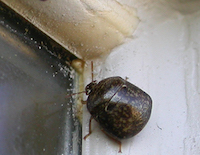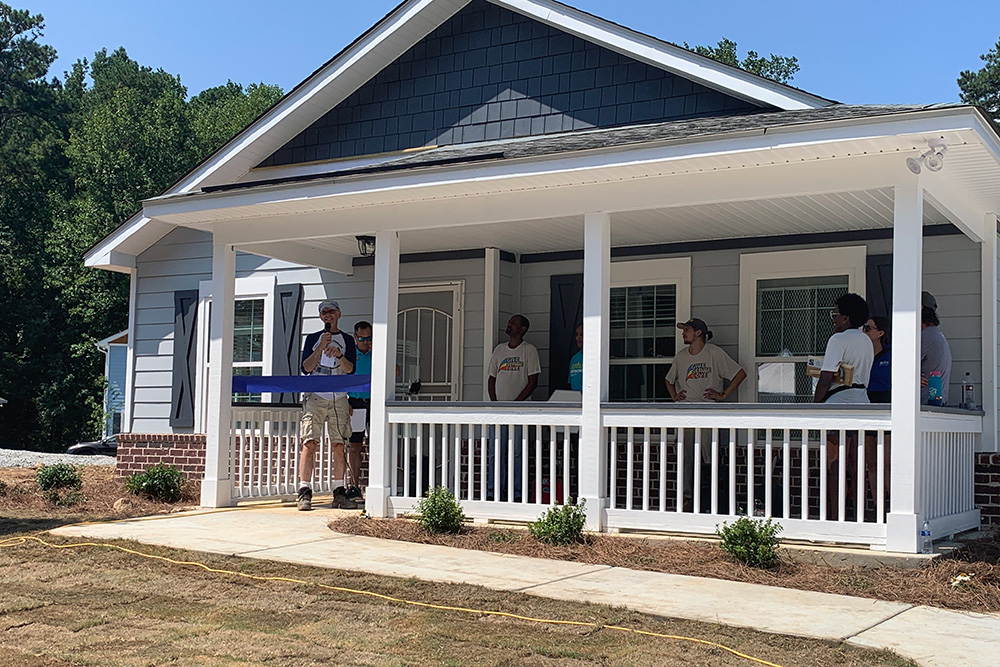Almost two years ago, a tiny immigrant pest arrived in Georgia, and there’s nothing the state’s immigration office can do to make it leave. The bean plataspid, or kudzu bug, munches on kudzu and soybeans and has now set up residence in four Southern states.
Homeowners consider the bug a nuisance. Soybean producers shudder at the damage it causes. And many are hoping it will prove to be a kudzu killer.
Spreading problem
The kudzu bug was first spotted in Georgia in the fall of 2009 when insect samples were sent to the University of Georgia Homeowner Insect and Weed Diagnostic Laboratory in Griffin, Ga. The first samples came from UGA Cooperative Extension agents in Barrow, Gwinnett and Jackson counties.
“The bug can now be found in 143 Georgia counties, all South Carolina counties, 42 North Carolina counties and 5 Alabama counties,” said Wayne Gardner, an entomologist with the UGA College of Agricultural and Environmental Sciences.
Last fall, Gardner had to search repeatedly to find the pest in kudzu patches in north Georgia. “Those areas are loaded with bugs this year,” he said.
By studying the pest for the past year, Gardner has determined wisteria, green beans and other legumes are the bug’s true hosts in the landscapes and home gardens. A plant becomes a true host of the insect when different life stages of the insect are found on the plant, he said.
Multiplying pest
Like Asian lady beetles, kudzu bugs seek shelter indoors. They are attracted to light colors, especially white cars and light colored house siding.
Removing kudzu is one way to help control the pest around homes, but that’s not an easy task, especially if the kudzu is growing on your neighbor’s land.
“The bugs re-invade so quickly from nearby kudzu that a pest control operator may have to treat every other day, losing money in the process. A single call that they were paid for might turn into a half-dozen visits, five of which they’d not be paid for,” said CAES entomologist Dan Suiter. “I suspect that the pest control industry will be steering somewhat clear of kudzu bug control unless some smart pest control operator begins to market kudzu removal as part of his business.”
Having a few hundred uninvited houseguests is bothersome, but the bugs are not harmful, and they don’t feed on indoor plants.
Munching on kudzu
No one seems to mind if the bugs take out a 1,000 or so acres of kudzu. But are they?
“We found the bug caused a 32 percent reduction in kudzu growth last year in the plots we monitored,” said Jim Hanula, an entomologist with the USDA Forest Service. He monitored the bug on kudzu plots in Athens, Ga., for the past year.
This may sound like reason to celebrate, but kudzu roots can grow as deep as 12 feet and weigh up to 300 pounds, Hanula said.
“We’re hopeful that feeding by the bug year after year will deplete those roots and weaken the plants,” he said. If the bug’s effect is cumulative, kudzu plants will likely weaken, and patches won’t be as thick.
“Hopefully, the bug will reduce kudzu’s ability to climb, which would be good for forestry,” he said.
Harming soybeans
The bean plataspid also feeds on soybeans, a crop grown in Georgia for the oilseed and animal feed markets.
UGA entomologist Phillip Roberts classifies the kudzu bug as an economic pest of soybeans. When left untreated in soybean fields, the bugs reduced the crop yield by 19 percent in 2010.
“We had a range of yield loss from 11 to 23 percent,” he said. “This means if a farmer grew 40 bushels of soybeans and lost 20 percent, that’s 8 bushels. With a value of $12 a bushel, that’s a $96 loss, so it makes sense to apply a treatment to control the pest.”
The bugs don’t eat soybeans. Instead, “they have a sucking mouthpart, and they use it to feed on the main stem,” Roberts said. “This adds additional stress to the plants.”
CAES entomologist David Buntin has found that plants the bugs were eating had fewer pods and fewer seeds in the pods.
“If they fed on the pod, the bean itself, I don’t know that we could grow soybeans in Georgia,” Roberts said. “The main point is it’s a yield-limiting pest, and it’s just incredible how it has moved so quickly across the Southeast.”





.png)


